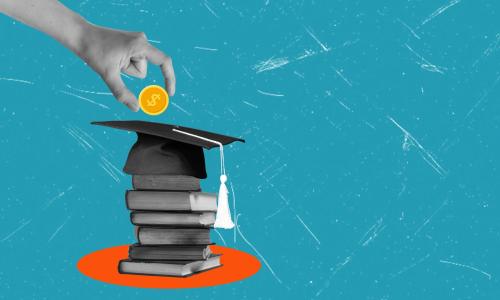Read the full report on intragenerational wealth mobility in the United States here.
After centuries of discrimination and economic exclusion, the US racial wealth gap remains stubbornly large. In our latest paper studying Americans born in the 1940s through 1960s, we show that the median white American in their early thirties had $29,000 more wealth than the median Black American of the same age. This racial wealth gap is even greater among older adults: the median white American in their late fifties had $251,000 more wealth than the median Black American. This is not just because initial wealth gaps compounded over time. As we show, even conditional on having the same wealth in their early thirties, white Americans reach a significantly higher wealth rank by their late fifties than Black Americans.
Upward mobility less likely for Black Americans
On top of having less wealth than white Americans to begin with, Black Americans are both less likely to move up the economic ladder and more likely to slide down it. Figure 1 shows the estimated wealth percentile attained by Black and white Americans by their late fifties, starting from the 10th, 25th, 50th, 75th, or 90th wealth percentiles We compare people to others their age who were born around the same time.
 Both Black and white Americans who have 10th or 25th percentile wealth in their early thirties are expected to improve their wealth position in their late fifties. However, Black Americans’ wealth status rises at a notably lower rate. For instance, Black Americans at the 10th percentile in their early thirties are expected to reach the 24th percentile in their late fifties — 13 percentiles lower than white Americans, who are expected to reach the 37th percentile.
Both Black and white Americans who have 10th or 25th percentile wealth in their early thirties are expected to improve their wealth position in their late fifties. However, Black Americans’ wealth status rises at a notably lower rate. For instance, Black Americans at the 10th percentile in their early thirties are expected to reach the 24th percentile in their late fifties — 13 percentiles lower than white Americans, who are expected to reach the 37th percentile.
The glass floor gap
As the chart shows, wealth status is even stickier at the top end of the distribution; the wealthy are unlikely to fall too far. But this “glass floor” effect varies by race. Black Americans who have high wealth are much more likely to lose ground than white Americans with the same wealth. For example, among those who start with wealth at the 90th percentile, Black Americans have much lower wealth in their late fifties (51st percentile) than white Americans (77th percentile).
We are far from closing the racial wealth gap. Our paper shows how the patterns of wealth accumulation and wealth mobility during working life contribute to this inequality. The racial wealth gap reflects different wealth dynamics as well as different starting positions. A white person who has median wealth in their early thirties is in fact expected to have more wealth in their late fifties than a Black person who has 90th percentile wealth in their thirties.
Among the options for tackling the racial wealth gap are progressive taxation of wealth; bolstering the Earned Income Tax Credit (EITC) and Child Tax Credit (CTC); reparations; targeted homeownership subsidies; and lowering the costs associated with higher education. Overall, the message of the paper is that policymakers need to pay attention to the processes driving different wealth trajectories by race, as well as the end results.
The Brookings Institution is financed through the support of a diverse array of foundations, corporations, governments, individuals, as well as an endowment. A list of donors can be found in our annual reports published online here. The findings, interpretations, and conclusions in this report are solely those of its author(s) and are not influenced by any donation.
The Brookings Institution is committed to quality, independence, and impact.
We are supported by a diverse array of funders. In line with our values and policies, each Brookings publication represents the sole views of its author(s).










Commentary
The Black-white gap in wealth mobility and what to do about it
June 29, 2022